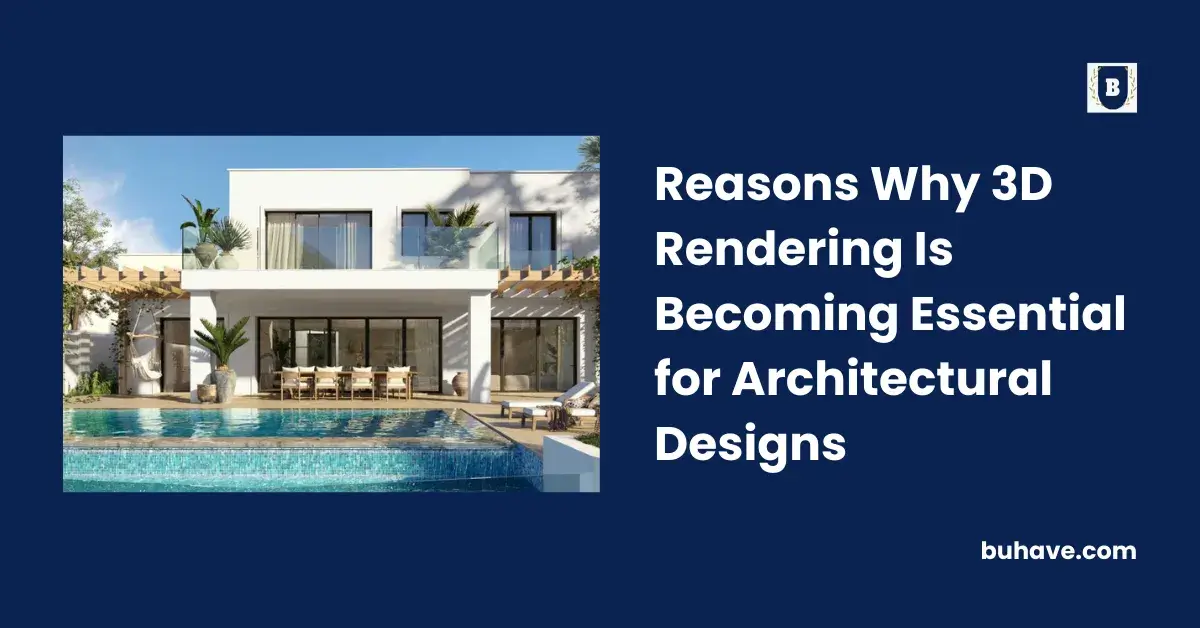Visualization is crucial in this era of digital transformation and communication. People are visual learners and 90% of information transferred to the brain is visual. Hence, visuals are essential for audience engagement. People absorb information differently, and visual presentations are preferred over static data dumps.
The need for visual engagement compels businesses to leverage 3D rendering, which is a game changer. 3D architectural renderings successfully communicate design goals while visually engaging the design process by revealing spatial features and allowing the customer to picture the space, resulting in additional design ideas due to greater spatial comprehension.
Role of 3D Rendering in Architectural Designing
Although 3D rendering is an excellent way to get architects and other stakeholders on the same page, here is what makes this technique essential in architectural designing:
Inexpensive Solution
3D Rendering services are a low-cost means of providing realistic project blueprints to investors. If they don’t like the initial design and want to make changes, they may do so quickly in existing files and return for another perspective. Consequently, the operation is quicker and less costly than it used to be a few decades ago. A comprehensive 3D rendering of a building’s façade costs a few thousand dollars, which is a steal when compared to the cost of modernizing older buildings.
Easy to Spot Problems
3D rendering helps avoid such difficulties and discover all types of issues before the building process begins. All design problems may be corrected in real-time, guaranteeing that the final design is the best version possible. The technique may save everyone involved a lot of time, money, and problems.
Effective Marketing
Marketing is a critical component of selling any architectural design and nothing may help clinch the sale more effectively than 3D rendering. Today’s market is harsh and everyone would do everything to get an advantage over the competition.
All you need is a well-designed render to attract the right audience and offer your designs straight to them. They will notice the design’s inventiveness and skill, and faultless renderings may help you stay ahead of the competition.
Accurate Designs and Clear Communication
In contrast to digital photographs, which cannot transmit exact 3D location data, 3D rendering provides accurate measurement details. On the other hand, many people struggle to understand 2D pictures, which are essentially just viewing theoretical shapes and dimensions. This is where 3D rendering comes into play, bridging the communication gap.
This presents a problem when it comes to exhibiting the design to clients. They may be incapable of seeing the larger picture. They cannot grasp all the subtleties of a sophisticated 2D layout. CAD conversion services may swiftly alleviate the communication problem by presenting stakeholders with a spectacular 3D representation that increases perception while bringing a project’s complexity together in a single, coherent approach.
Bring Innovative Ideas to Life
Architectural designs are often available in a variety of ideas and alternatives. Whenever a final design is decided, realistic representations may assist you and everyone else find better answers to various problems. Investors and builders may get a better concept and develop the design, even more, when they view the rendering.
Visualize Your Goal
With CAD plans and sketches, designers and architects may readily picture a design space. On the contrary, it is difficult for an individual to visualize a concept and design based on CAD drawings. This is where 3D architecture representations help bridge the gap. 3D architecture visualization may assist in visualizing planned projects and adjustments to be included in the planning stage. 3D architecture visualizations allow for the rapid exploration of fresh design perspectives and the exact alteration of existing designs.
Proactively Visualize the Project Interiors
Clients may digitally view a building structure even before the project begins and, as a result, make design adjustments during the conceptual stage. Interior design 3D representations aid clients in evaluating their furnishing needs, wall colors, furniture arrangements, and more. The on-site building process is accelerated, and the requirement for rework or design adjustments is decreased when the bulk of the alterations are made during the conceptual stage. Potential design problems may be checked and addressed before construction.
Conclusion
3D Rendering software plays a vital role in the field of architecture. Previously, architects had to hand-draw multiple sketches. However, they can now employ high-end software to generate realistic creations quickly. All modifications may be made while the operation is running, making it quicker and simpler to handle. There is no doubt that 3D rendering is an important part of external architectural design. Furthermore, it is expected to evolve quickly and become more comprehensive soon.

